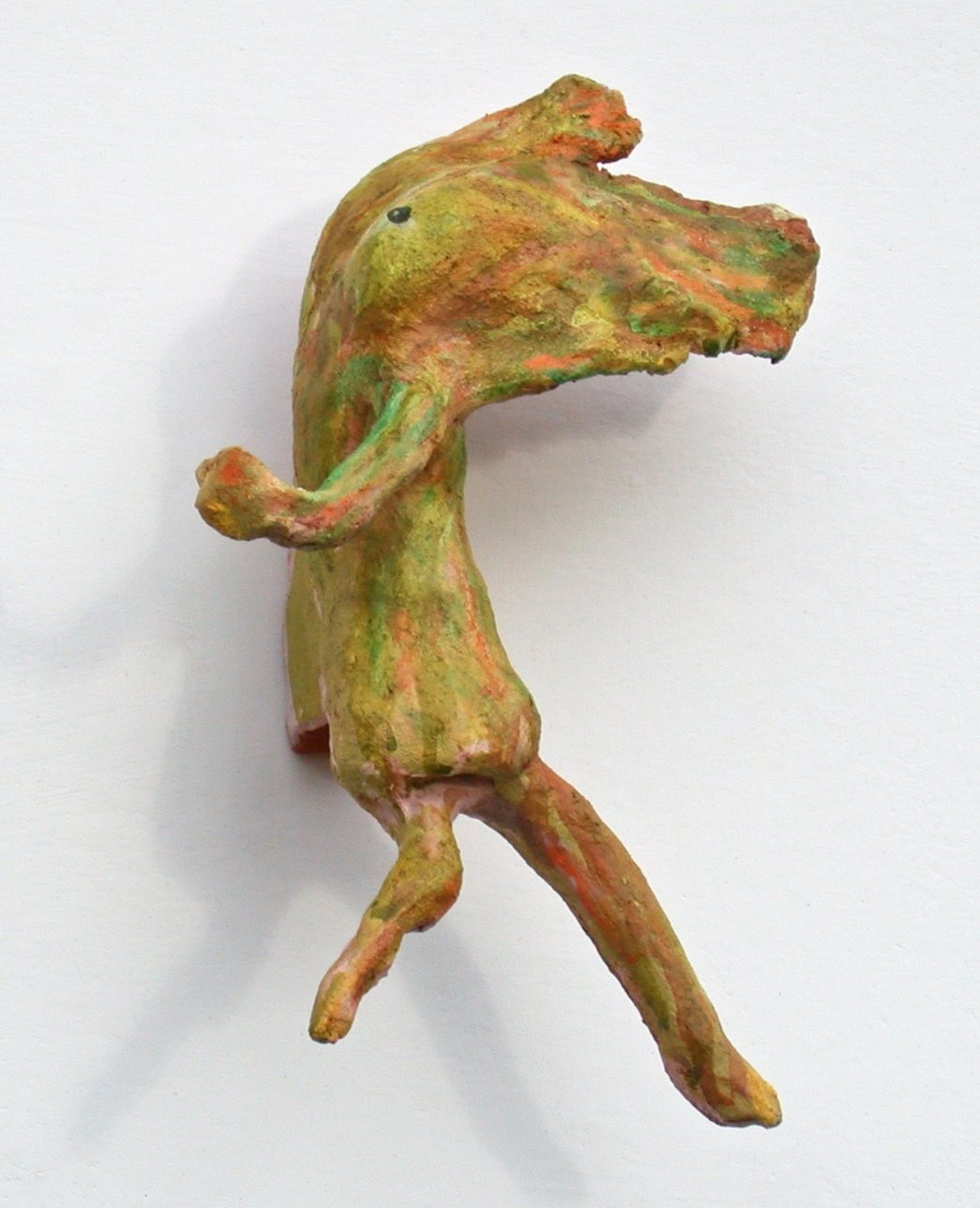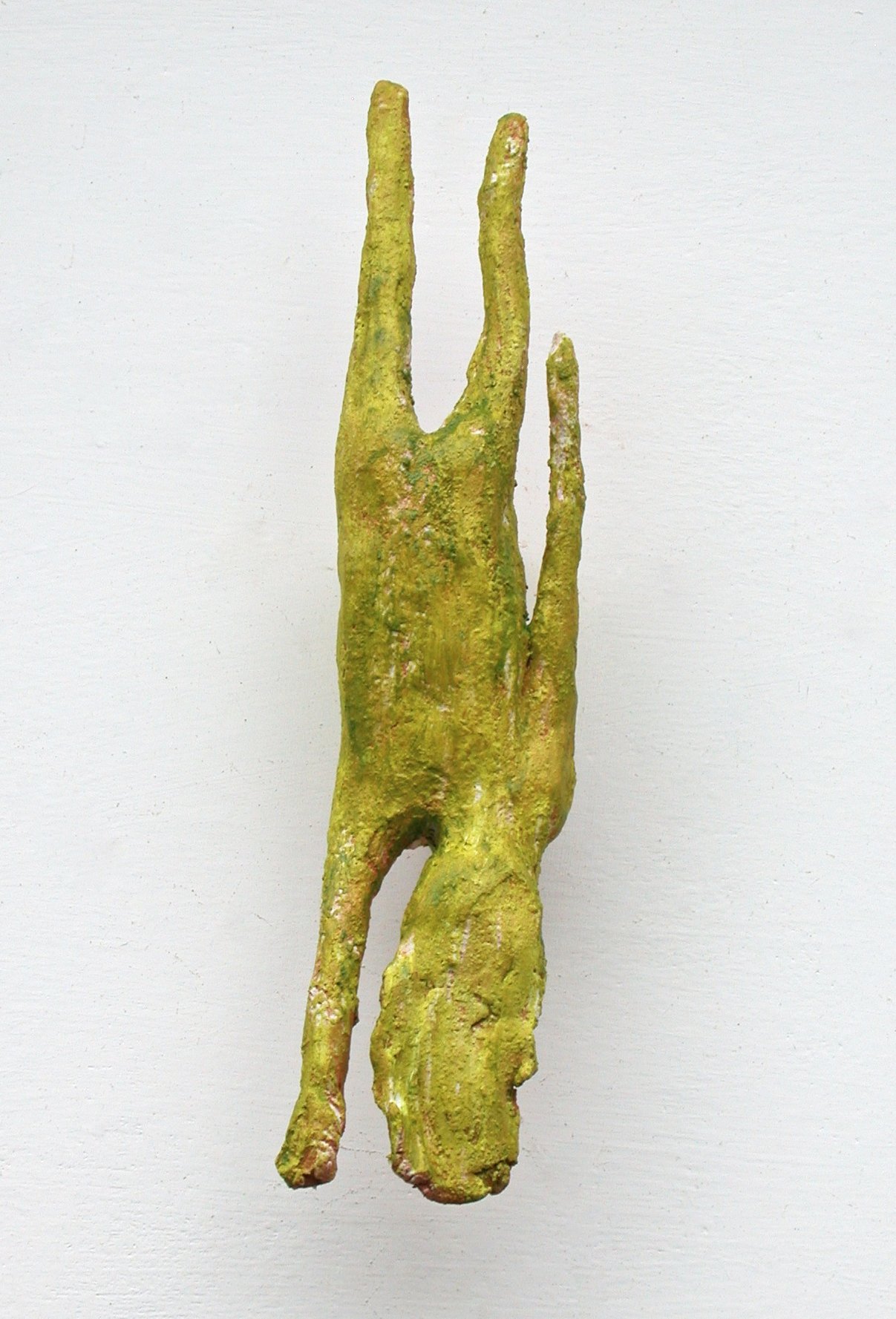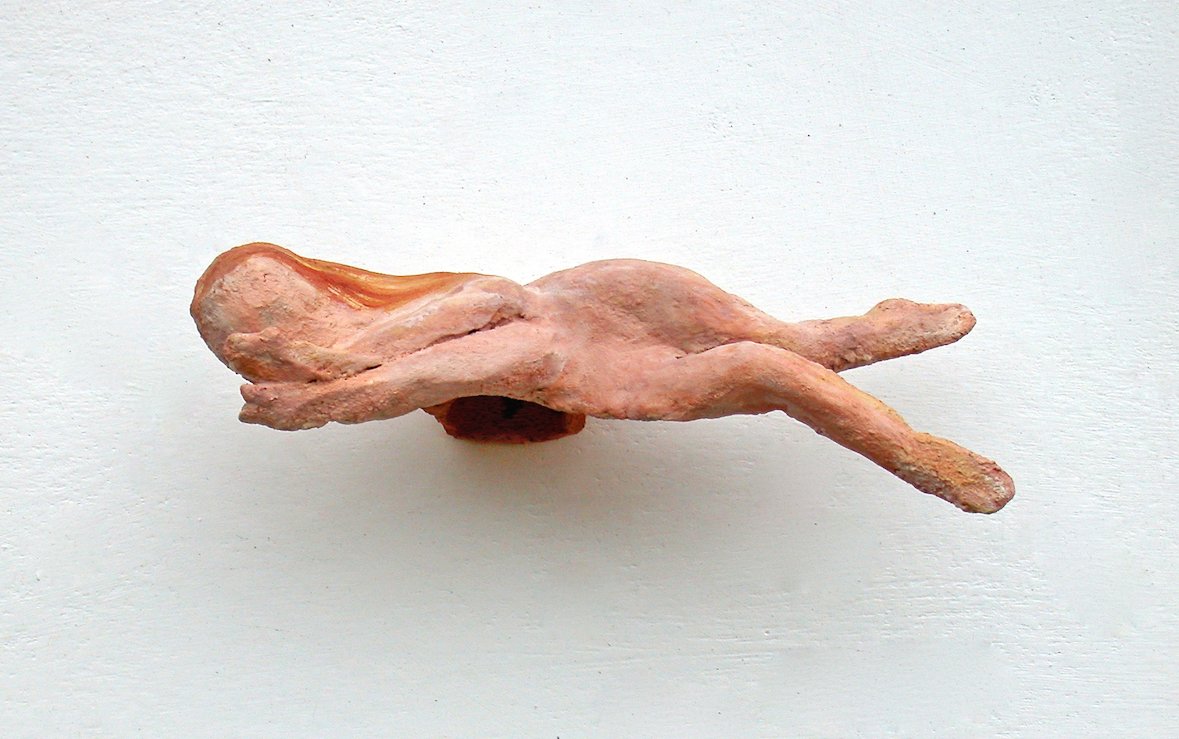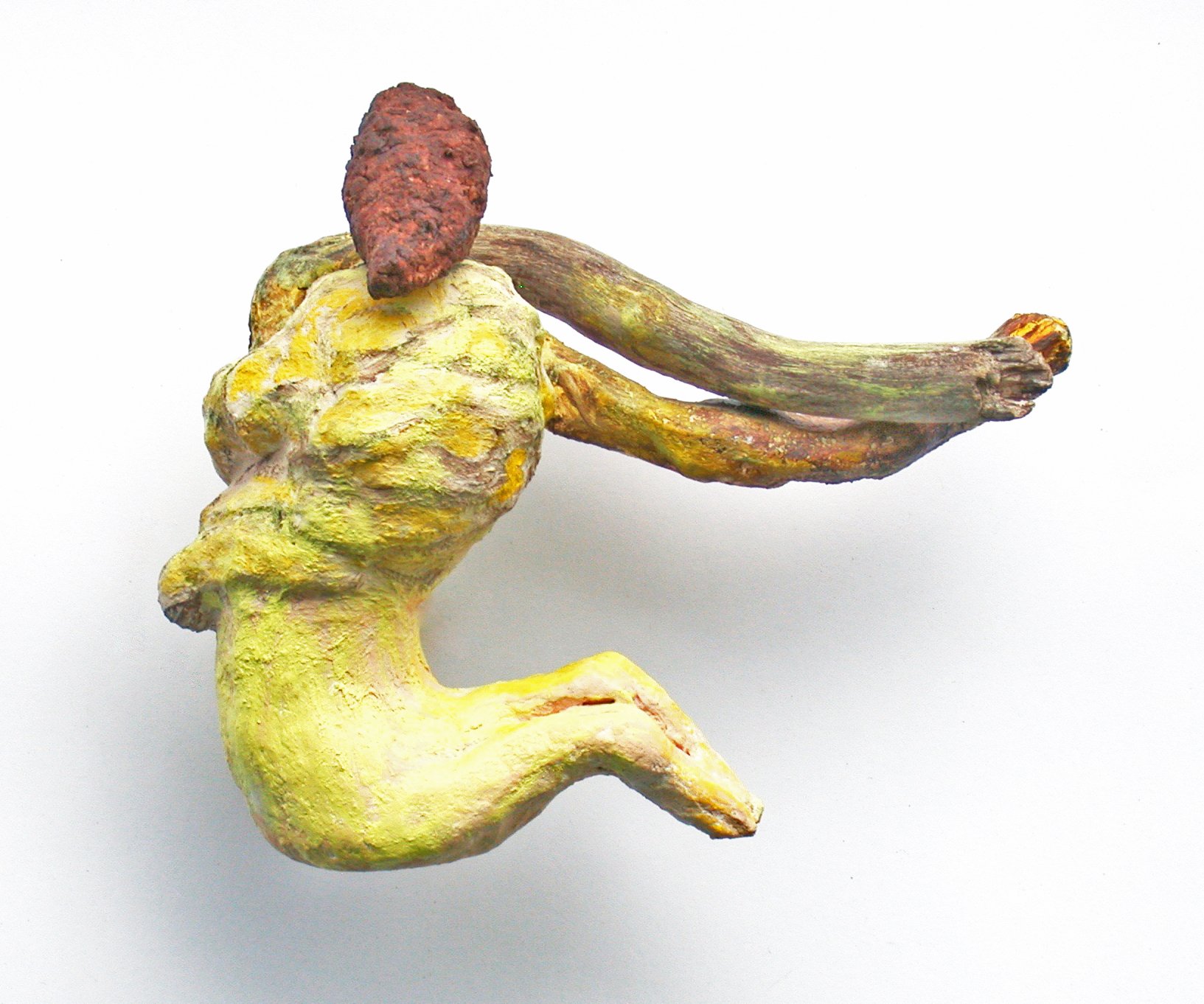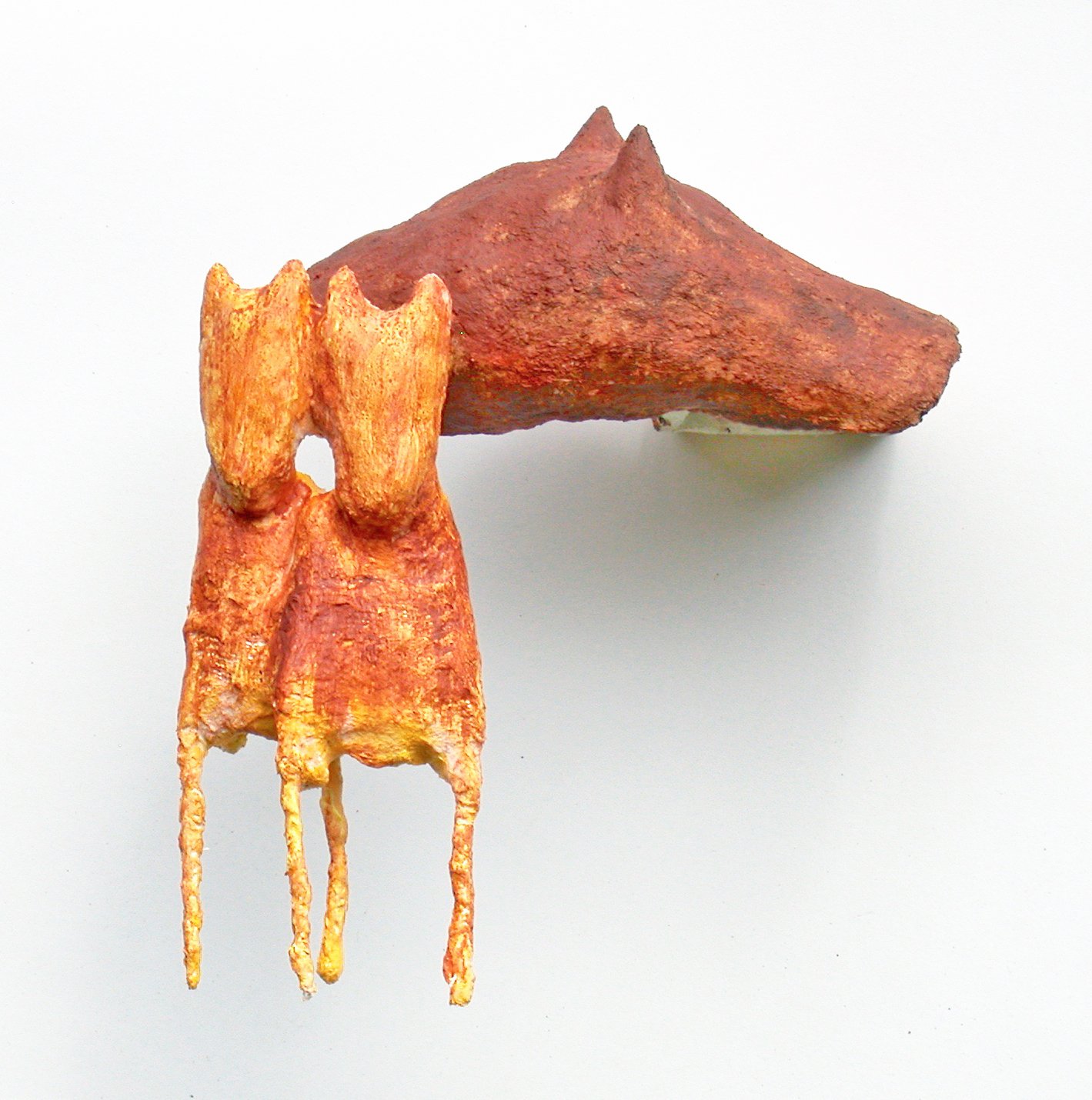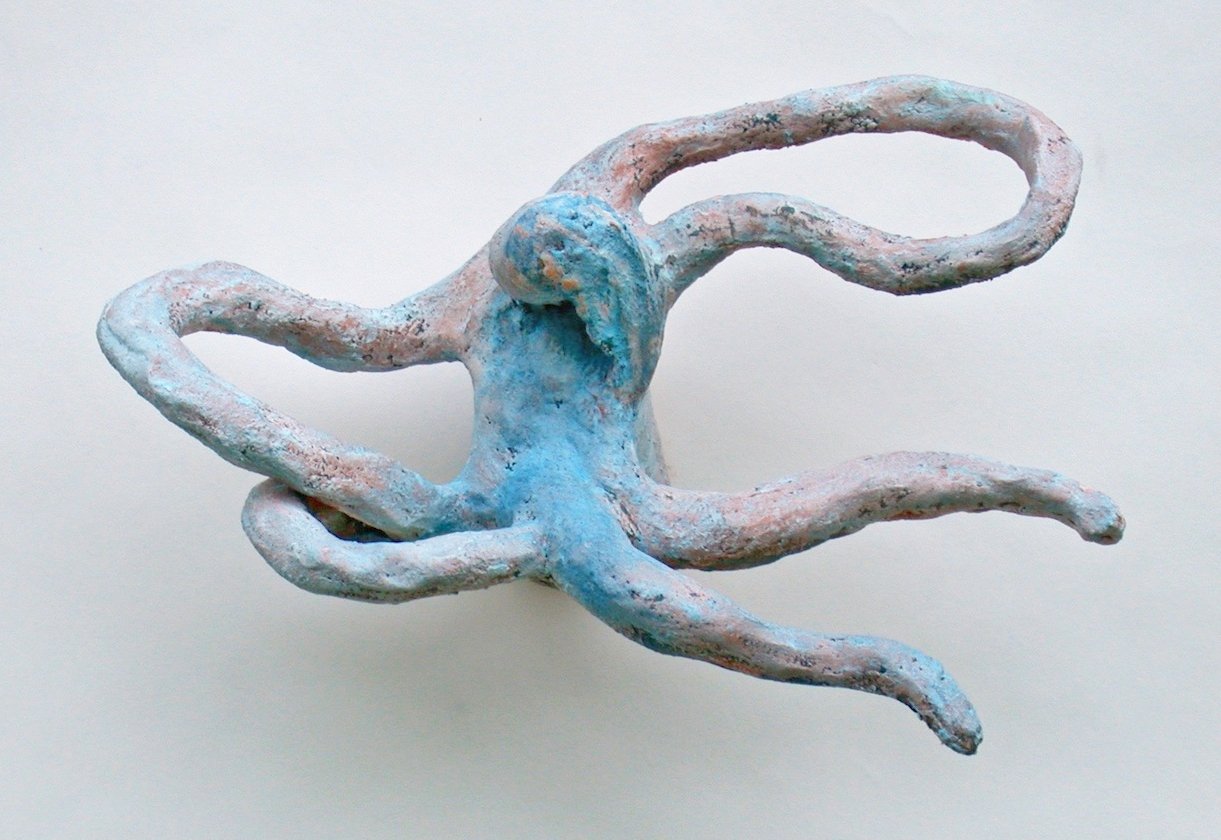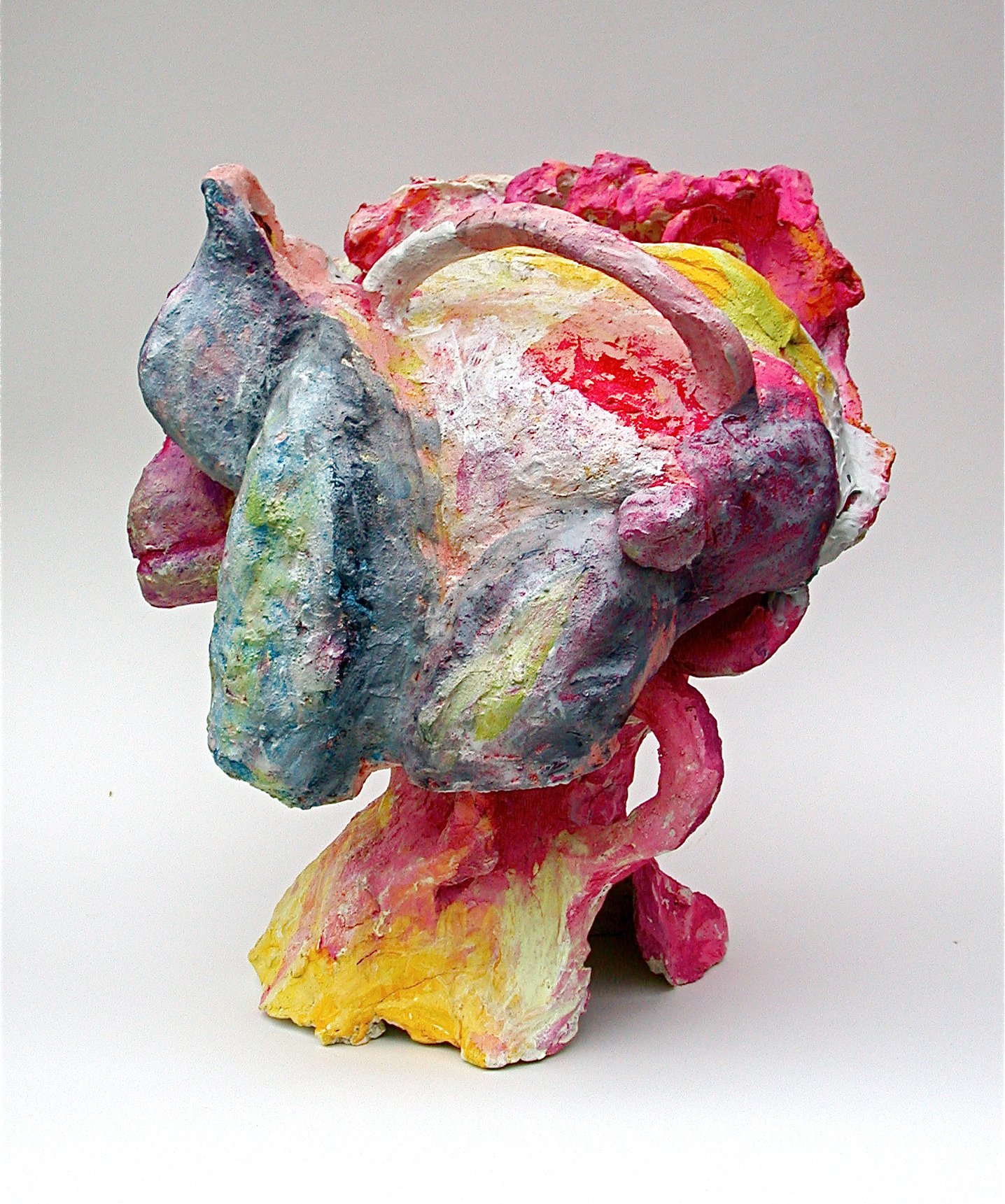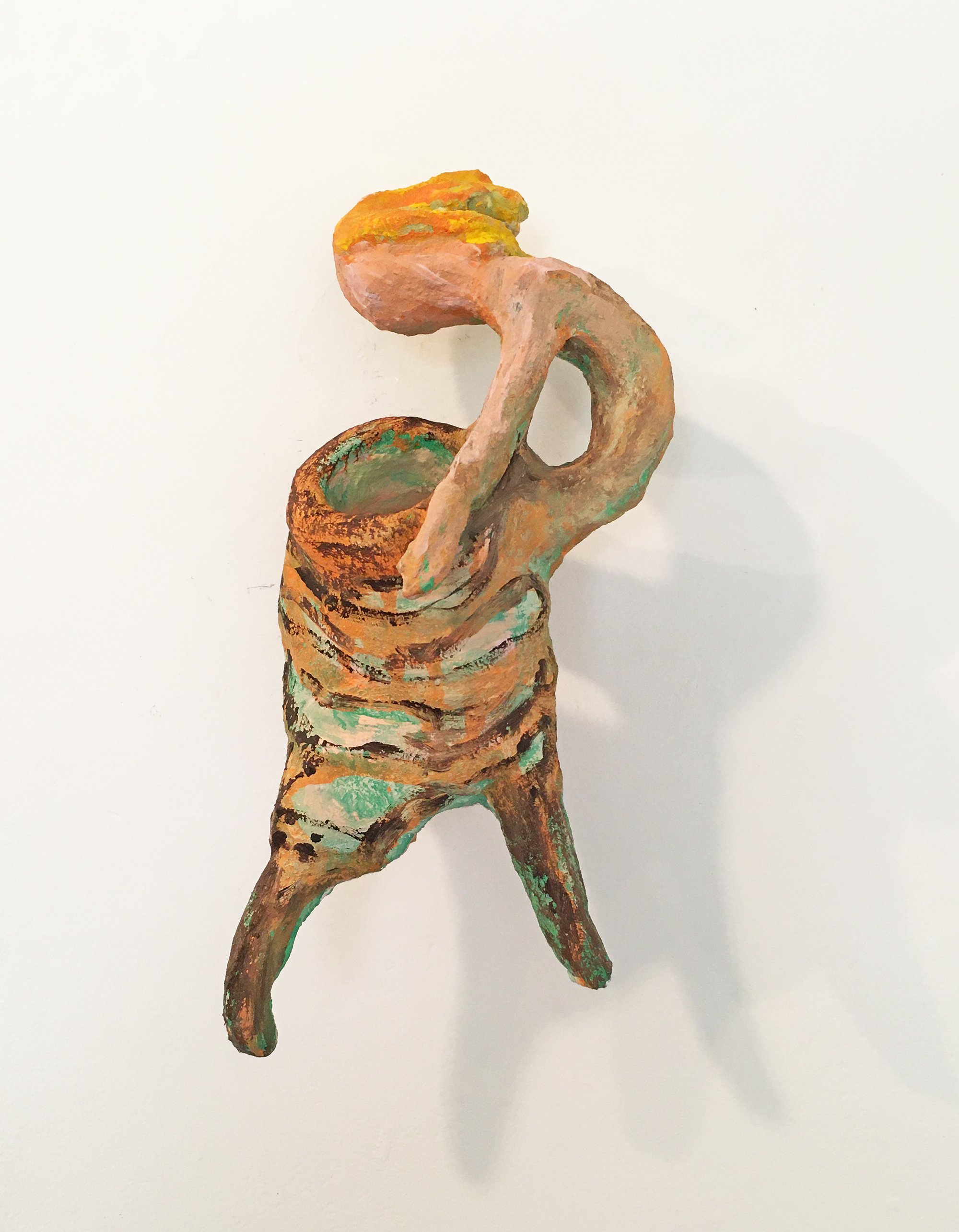Jackie Shatz is a New York-based sculptor working in clay and mixed media. She often refers to her intimate sculptures as paintings, since color is an essential element in her work. Loosely figurative, intriguingly narrative, they carry allusions to mythological archetypes. There are often art historical references that tie her work to classical art, and she frequently extracts figures from the work of contemporary artists. One senses that the figures and animals are in the process of transformation, no longer clay but not yet a realized form. I read them as personal metaphors, rich with meaning if you take the time to look.
MH: How important to you is the concept behind your work? How important is process?
JS: Process is everything. While I’m working, I don’t have a concept in mind. I tap into richer content by not coming up with the concept first. It emerges from some unconscious process while I’m doing the work. I discover the piece while I’m working on it, and the figures emerge from the environment. I start out with a figure or a shape, and I make formal decisions, avoiding things that are too literal. When I let go of the literal and make it about the shape, it’s more satisfying to me.
MH: How do you know when a piece is finished?
JS: When I’m no longer feeling anxious, it’s finished. I don’t want the piece to be ordinary; I want it to surprise me sculpturally. When I know that it’s an interesting and unusual shape, I can feel it in my body while I’m working. But it’s not just the shape; the color is also the structure. I know when a piece works when I feel like it’s arrived at some kind of truth or a timeless quality.
MH: Do you consider yourself a painter and a sculptor equally?
JS: I don’t think they should be separate.
MH: What about your work interests you the most?
JS: My work combines all my interests: anthropology, ancient art, literature, language. It’s a way to nonverbally combine all my interests and have access to them. Color and shape are important. The process is engaging and absorbing, but it’s not that much fun. I like a challenge, but it’s a struggle that needs resolution. I’m like a dog with a bone – I’ll just keep chewing on it until I make it right.
MH: What about it is fun? What is the struggle?
JS: It’s interesting! And engaging and satisfying. Art is the most interesting thing to me, next to books. It’s anxiety producing because you don’t know how it’s going to turn out, and you care a lot. It’s like a primeval struggle that you’ve probably engaged in many times in a more psychological way. I never really feel like I hit it; I feel like I’m always developing my work towards something. It’s just an ongoing thing, you never know if it’s going to work out. But you have to realize that every piece isn’t going to work. If you can tolerate that way of working, it leaves things more open. For me, it’s not that bad if a piece doesn’t work out, because I’ll take part of the piece and turn it into something else. But that doesn’t make it any less tense during the process.
MH: Do you think that if you could remove the tension that we’re talking about, that your work would be better for it? Or is the struggle necessary?
JS: I don’t know if it’s necessary or if it’s just the way that I’m built psychologically, but when I get engaged in something I’m very intense. There’s a lot of angst. I don’t think my work would be better without it, but I don’t know if it’s better because of it. Sometimes I think it would be better if I was more relaxed. I have people look at my work and say, “Oh, that looks like so much fun!” It’s not so much fun.
MH: How courageous are you in your creative practice?
JS: I’m very courageous in my studio practice. I’m not afraid to destroy things. I’m very critical and demanding, and willing to push my work as far as I can. I’m not looking for an easy solution, in fact I probably make things harder for myself.
MH: How important is inspiration to you?
JS: Not that important. Habit is more important than inspiration. I’m more obsessed to work than I am inspired to work, and if you’re in the habit of working you’re going to work, with or without inspiration. If you’re working every day, inspiration can come at any time. It inspires me to look at other peoples’ work. I also get inspired by reading, walking, taking a few hours off while I’m working. This is important because after a while you can’t see and evaluate things and you need some distance. So when you come back to it you might be able to figure something out that you can’t when you keep banging your head against something.
MH: What is the best part about being an artist?
JS: Having something interesting and meaningful to do with my life. Making something new in the world. I love being in my studio in spite of my angsty complaints. But it’s also looking at art and being part of this whole incredible world of art. Art is a communication; it’s meant to go out in the world. I get an incredible amount from looking at art, and so I assume that people get something out of looking at my art.
MH: What is something about your work that you’d like people to know?
JS: It’s genuine. It comes from a pure heart.
